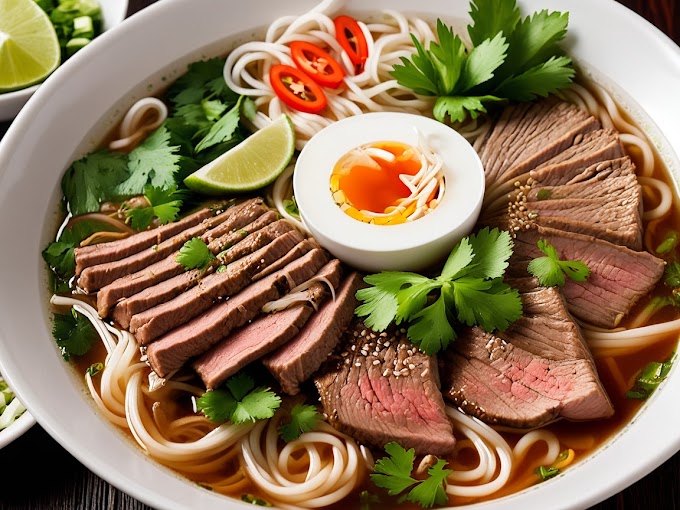Homemade Kimchi
Introduction
Kimchi is a staple in Korean cuisine, known for its bold flavors and health benefits. Made from fermented vegetables, usually napa cabbage and radishes, kimchi is often seasoned with spices, garlic, and ginger. It can be enjoyed as a side dish, in stews, or even in fried rice. This recipe will guide you through the process of making traditional kimchi at home.
Ingredients (Makes about 1 quart)
For the Kimchi Base
- 1 large napa cabbage (about 2 to 3 pounds)
- 1/2 cup sea salt (or kosher salt)
- Water, for soaking
For the Kimchi Paste
- 1 tablespoon grated ginger
- 6 cloves garlic, minced
- 1 tablespoon sugar (preferably Korean cane sugar or brown sugar)
- 1/4 cup fish sauce (or vegan alternative)
- 1/4 cup Korean red pepper flakes (gochugaru; adjust to taste)
- 1 tablespoon soy sauce (optional, for extra depth)
For the Vegetables
- 1 medium daikon radish, julienned
- 3 green onions, chopped
- 1 medium carrot, julienned (optional)
- 1 tablespoon sesame seeds (for garnish)
Instructions
1. Prepare the Napa Cabbage
- Quarter the cabbage: Cut the napa cabbage lengthwise into quarters, then cut across into bite-sized pieces.
- Salt the cabbage: In a large bowl, dissolve the 1/2 cup sea salt in water. Submerge the cabbage pieces in the saltwater, ensuring they are fully covered. Let it soak for about 2 hours, turning occasionally.
2. Make the Kimchi Paste
- While the cabbage is soaking, combine the grated ginger, minced garlic, sugar, and fish sauce in a small bowl.
- Gradually add the Korean red pepper flakes (gochugaru) until the desired spiciness is achieved. You can start with 1/4 cup and add more to taste. If using soy sauce, add it to the paste mixture.
3. Rinse and Drain the Cabbage
- After 2 hours, drain the cabbage and rinse it thoroughly under cold water to remove excess salt. Let it drain in a colander for about 10 minutes.
4. Combine Vegetables with Kimchi Paste
- In a large mixing bowl, combine the drained cabbage, julienned daikon radish, chopped green onions, and julienned carrot (if using).
- Add the kimchi paste to the vegetable mixture, wearing gloves (to protect your hands from the chili paste), and thoroughly mix everything until the vegetables are well-coated with the paste.
5. Pack the Kimchi into Jars
- Transfer the kimchi mixture into a clean, sterilized jar, packing it down to minimize air pockets. Leave some space at the top, about 1 inch, as the kimchi will expand as it ferments.
- Seal the jar tightly with a lid. You may want to place a plate underneath to catch any overflow during fermentation.
6. Ferment the Kimchi
- Leave the jar at room temperature for about 1-2 days to ferment, depending on the ambient temperature and desired sourness. Taste it daily to see if it has reached your preferred level of fermentation.
- After the initial fermentation, move the jar to the refrigerator. Kimchi will continue to ferment slowly in the fridge and can be enjoyed for several weeks.
Tips for Perfect Homemade Kimchi
- Adjusting Spice Levels: Feel free to adjust the amount of gochugaru based on your heat preference. Start with less and add more as needed.
- Experiment with Ingredients: Kimchi is versatile! You can add other vegetables like cucumbers, scallions, or even fruits like apples or pears for sweetness.
- Fermentation Time: The fermentation time can vary based on temperature. In warmer conditions, it will ferment faster, while cooler environments will slow the process.
Cultural Background of Kimchi
Kimchi is deeply rooted in Korean culture and history, often referred to as the national dish of Korea. It has been consumed for centuries as a way to preserve vegetables through fermentation. Traditionally, families have their own unique recipes, passed down through generations, with variations based on regional preferences and seasonal ingredients.
Beverage Pairing
- Soju: A popular Korean distilled beverage that pairs well with the bold flavors of kimchi.
- Makgeolli: A traditional Korean rice wine that offers a refreshing contrast to the spiciness.
- Korean Barley Tea: A light, nutty tea that complements the meal and aids digestion.
Final Thoughts
Homemade kimchi is a delicious and nutritious addition to your meals. With its vibrant flavors and health benefits, it's easy to see why kimchi is beloved around the world. This recipe provides a solid foundation for your own kimchi adventures, allowing you to customize it to your taste. Enjoy your homemade creation as a side dish, in stews, or as a topping for rice and noodles!








0 Comments